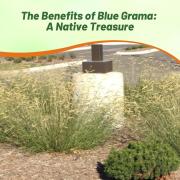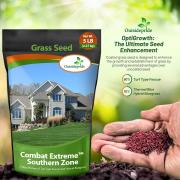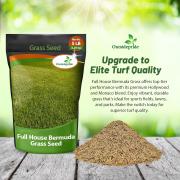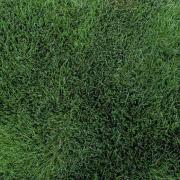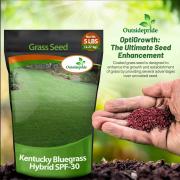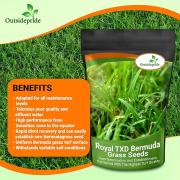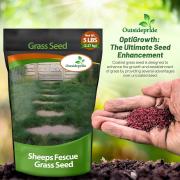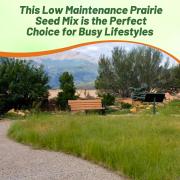Cool season grasses include: Kentucky Bluegrass, Fescues (turf type and fine), Bentgrass and Ryegrasses. They are often referred to as "northern grasses" because they are hardy and well adapted to cold winter climates. Cool season grasses grow best in the cool months of fall and spring and then their growth slows during the heat of summer. Cool season drought tolerant grasses vary in their drought tolerance; some need supplemental watering, while others can survive on occasional rain alone. Turf type fescue is the most widely adapted cool season grass even being used in the South (primarily in shady locations). Sheeps fescue is the most drought tolerant fine fescue; however, it can be clumpy when planted alone so it is generally used in mixtures or for erosion control. Ryegrass, bentgrass, and bluegrass (except hybrids) are generally not considered drought tolerant.
Cool season grasses will stay green in the winter months except in very cold USDA zones where they may go dormant and turn brown. As soon as warmer Spring weather arrives, the dormant grass will green back up.
Warm season grasses include: Bermudagrass, Buffalograss, Centipedegrass, Bahiagrass, and Zoysia grass. Their peak growing time is mid-summer when the temperatures are the hottest. Drought tolerant warm season grasses have the ability to survive on little water during these peak growing times. Many, but not all, varieties of warm season species are considered drought tolerant. Bermuda grass is the most widely adapted of the warm season grasses used all across the South and more cold tolerant varieties such as Yukon are being developed. Bermuda is consided heat and drought tolerant; however, for optimal growth it can still use 1 inch of water per week, but does not need that much in order to survive. In contrast, Buffalo grass can grow optimally with just 1/4" of water per week and even survive on much less. Buffalo is not as widely adapated as it does not do well in areas that get more than 30" of annual rainfall. Its primary area of adaptation is the Midwest region.
Warm season grasses go dormant and turn brown in cold USDA Zones as 4 - 7. This means your lawn may be brown for approximately 5 months in the transition zone when choosing a warm season grass. Warm season grasses are also subject to more winter kill than cool season grasses the further North they are planted.
Many studies estimate in hot, dry climates that 75% of a households' water is used to irrigate lawns and landscaping. Xeriscaping (the process of landscaping, or gardening, that reduces or eliminates the need for irrigation) helps preserve water as it is more reliant on natural rainfall and minimal maintenance when compared to traditional landscaping. Several studies have concluded that xeriscaping can reduce outdoor irrigation by 60% which will greatly reduce your water bill. There is no better way to start xeriscaping then choosing the right drought tolerant grass for your area.

































